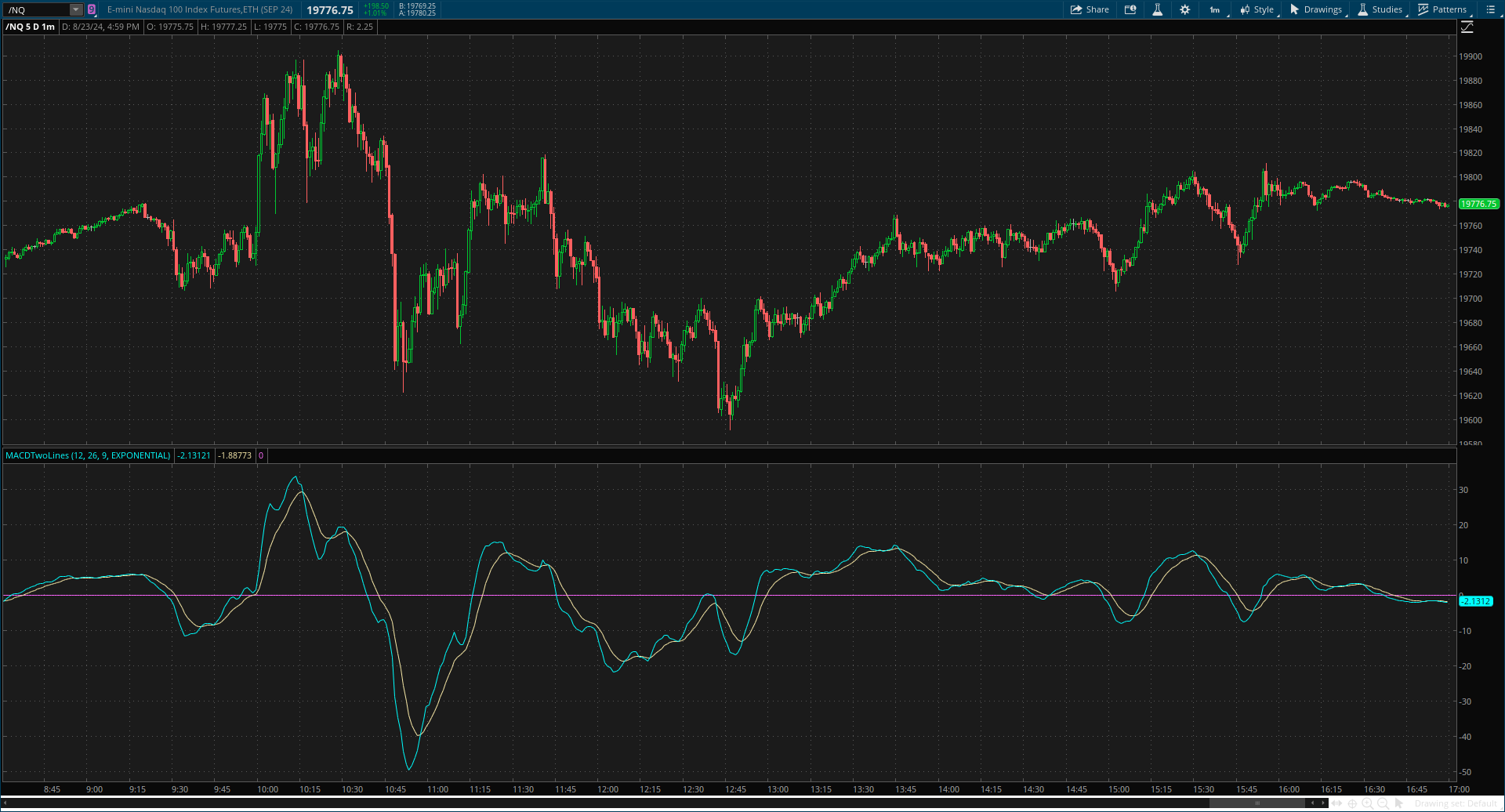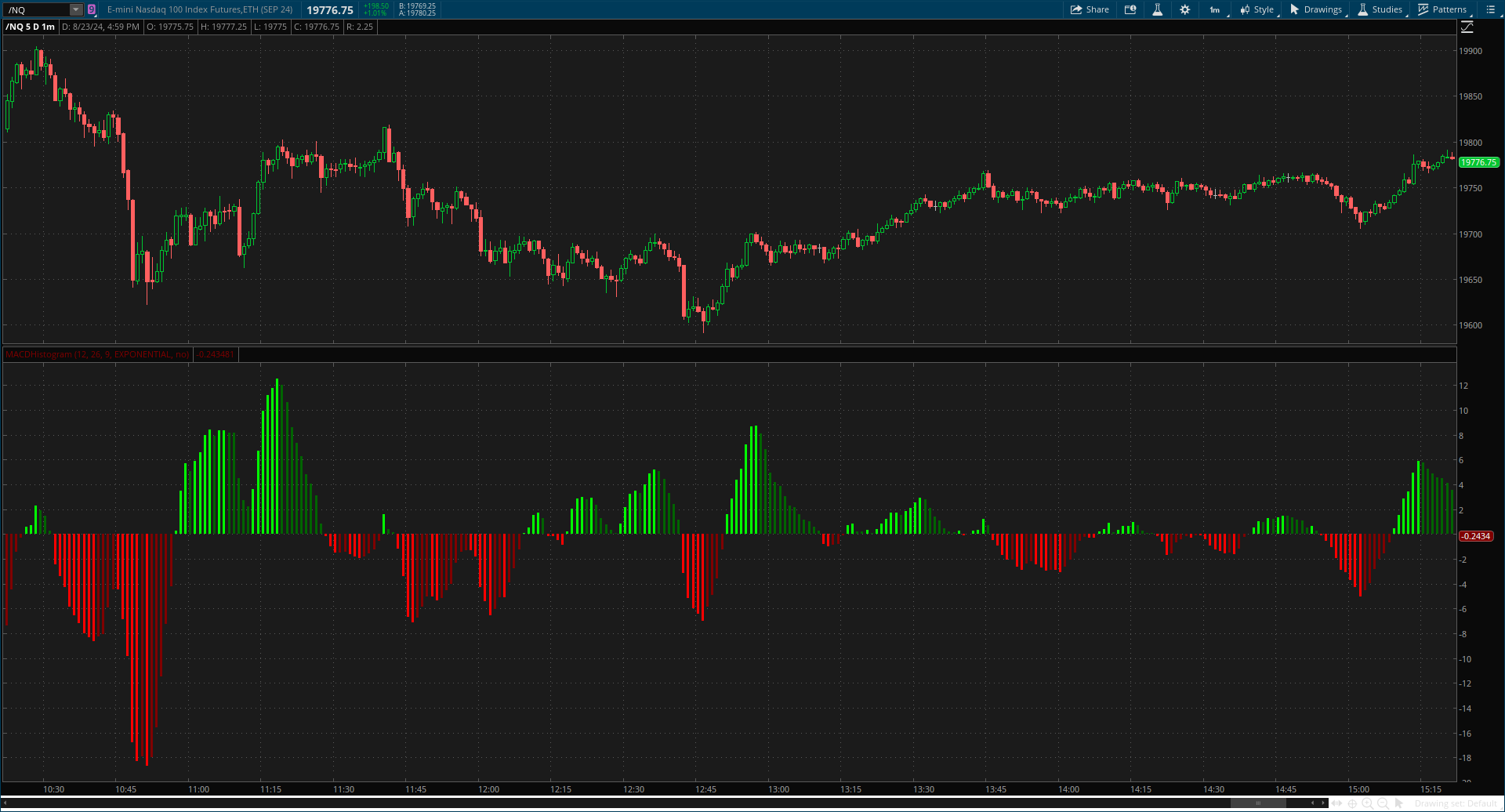The Ultimate Guide to MACD
The Ultimate Guide to MACD
Mastering the Moving Average Convergence Divergence
Introduction to MACD

Understanding the MACD Components
What is MACD?
MACD is a trend-following momentum indicator that shows the relationship between two moving averages of a security’s price. It is calculated by subtracting the 26-period Exponential Moving Average (EMA) from the 12-period EMA.
The MACD Line
The MACD line is the difference between the 12-period and 26-period EMAs. When the MACD line crosses above the signal line, it indicates a bullish signal, suggesting that the price may rise. Conversely, when it crosses below the signal line, it indicates a bearish signal, suggesting that the price may fall.
The MACD Signal Line
The signal line is a 9-period EMA of the MACD line. It acts as a trigger for buy and sell signals. When the MACD line crosses above the signal line, it’s a buy signal; when it crosses below, it’s a sell signal.
The MACD Histogram
The histogram represents the difference between the MACD line and the signal line. It visually shows the distance between these two lines and is a great way to spot the strength of a trend.

How to Use MACD in Trading
Identifying Trends with MACD
MACD is a reliable tool for identifying trends. When the MACD line is above the signal line, and both lines are above the zero line, it indicates an uptrend. Conversely, when both lines are below the zero line, it indicates a downtrend.
Spotting Divergences
A divergence occurs when the MACD and the price of the underlying security move in opposite directions. A bullish divergence happens when the price makes a lower low, but the MACD makes a higher low. This suggests that the downtrend is losing momentum and a reversal could be near. A bearish divergence occurs when the price makes a higher high, but the MACD makes a lower high, indicating a potential reversal to the downside.
Advanced MACD Strategies
MACD Crossover Strategy
The MACD crossover strategy is one of the most popular methods of trading with MACD. It involves buying when the MACD line crosses above the signal line and selling when it crosses below. This strategy works best in trending markets.
MACD and RSI Combo
Combining MACD with the Relative Strength Index (RSI) can enhance your trading signals. While MACD identifies trends, RSI helps you determine overbought or oversold conditions. For example, if MACD gives a buy signal and RSI is below 30, it could be a strong buying opportunity.
MACD Histogram Reversal
This strategy focuses on the MACD histogram. When the histogram starts to shrink after a significant expansion, it may indicate that the current trend is losing momentum and a reversal is imminent. Traders often use this as a signal to close positions or prepare for a trend change.
Common Mistakes When Using MACD
Overreliance on MACD
While MACD is a powerful tool, relying solely on it without considering other factors such as volume, support/resistance levels, and broader market conditions can lead to false signals.
Ignoring Market Context
MACD is most effective in trending markets. Using it in sideways or choppy markets can lead to numerous false signals, causing unnecessary losses.
Failing to Adapt Settings
The default settings (12, 26, 9) work well for most situations, but they might not be suitable for all trading styles. Adjusting the settings to fit your specific strategy or the asset you’re trading can significantly enhance MACD’s effectiveness.
How to Customize MACD for Your Trading Style
Short-Term vs. Long-Term Trading
For short-term trading, you might want to use shorter EMAs, such as 5-period and 13-period, to get faster signals. For long-term trading, sticking with the standard 12-period and 26-period EMAs is often sufficient.
Adjusting the Signal Line
You can adjust the signal line’s period to be more or less sensitive to price changes. A shorter period will give you faster signals, which might be helpful for day trading, while a longer period might be more suitable for swing trading.
FAQs About MACD
What is the best setting for MACD?
The best setting for MACD depends on your trading style and the asset you’re trading. The default settings of 12, 26, and 9 are suitable for most traders, but you may need to adjust them for specific strategies or markets.
Can MACD be used for day trading?
Yes, MACD can be used for day trading. However, it’s recommended to use shorter time frames for EMAs (e.g., 5-period and 13-period) to get faster signals.
How does MACD compare to other indicators?
MACD is a versatile indicator that can be used in conjunction with other indicators like RSI, Stochastic Oscillator, and Bollinger Bands to confirm signals and improve accuracy.
Conclusion
MACD is a versatile and powerful tool for traders, capable of identifying trends, signaling reversals, and providing trading opportunities across different time frames. By understanding its components, learning to spot divergences, and applying advanced strategies, you can enhance your trading performance. Remember to avoid common mistakes and customize MACD to suit your specific trading style. With practice, MACD can become an invaluable part of your trading toolkit.
Check out our article on:
- Introduction to Options Trading
- Mastering Butterfly Spreads
- The Power of Diagonal Spreads
- The Power of Iron Condors
- The Power of Vertical Credit Spreads
Elevate Your Trading Game
Ready to take your options trading to new heights? Whether you’re a day trader, swing trader, or busy professional, we have you covered. Join our exclusive community of traders and gain access to our comprehensive educational resources, live trading sessions, and expert analysis. We’ll guide you through the intricacies of debit spreads and other advanced options strategies, helping you achieve your financial goals. Don’t miss out on this opportunity to become a more confident and profitable trader. Sign up today!
Below are the links:
To your success,

Billy Ribeiro is a renowned name in the world of financial trading, particularly for his exceptional skills in options day trading and swing trading. His unique ability to interpret price action has catapulted him to global fame, earning him the recognition of being one of the finest price action readers worldwide. His deep comprehension of the nuances of the market, coupled with his unparalleled trading acumen, are widely regarded as second to none.
Connect with us:





